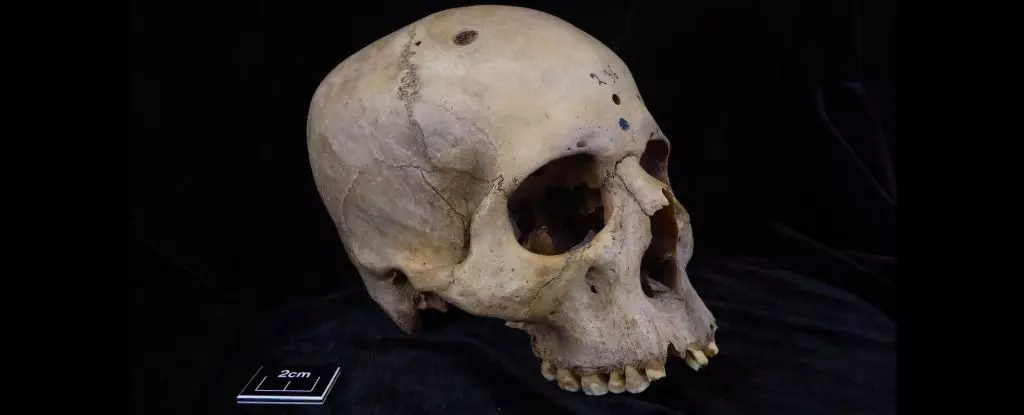The ancient Egyptians were known for their remarkable skills and knowledge in the field of medicine, which continues to amaze us even today. Their advanced understanding of various medical conditions and treatments has left a lasting impact on modern medicine. However, there were certain diseases that the Egyptians struggled to treat effectively, with cancer being one of the major challenges. Cancer, characterized by the mutation of living tissue into a malignant and deadly form, was a formidable foe for the ancient Egyptians, just as it is for us today.
Recent findings from the University of Cambridge’s Duckworth Collection shed new light on how the ancient Egyptians approached the treatment of cancer. Two skulls from the collection exhibit evidence of cancer, along with signs of attempts to treat the condition. Paleopathologist Edgard Camarós of the University of Santiago de Compostela in Spain describes this discovery as a unique insight into ancient Egyptian medical practices that date back over 4,000 years. This finding offers a new perspective on the history of medicine and the ways in which ancient societies dealt with complex diseases like cancer.
One of the skulls, labeled as Skull 236, belonged to a male individual who lived in ancient Egypt between 2687 and 2345 BCE. Analysis of the skull revealed around 30 lesions, indicative of metastasized carcinoma, although other diagnoses were also considered. The presence of cut marks on the edges of the lesions suggests that ancient surgical intervention may have been attempted to remove the cancerous tissue. However, the lack of healing in these cut marks indicates that the procedure likely took place around the time of death. This discovery highlights the experimental nature of ancient Egyptian medicine and their efforts to explore treatments for cancer.
The second skull, identified as Skull E270, belonged to a female individual who lived between 663 and 343 BCE. The skull displays a prominent lesion consistent with osteosarcoma or meningioma, along with healed injuries caused by sharp-force and blunt-force trauma. The well-healed nature of these injuries suggests that the woman received some form of treatment, raising questions about her involvement in warfare activities. The presence of the large cancerous lesion on her skull, without clear signs of treatment, underscores the challenges that ancient Egyptians faced in effectively addressing cancer.
While the attempts to treat cancer in ancient Egypt demonstrate their innovative approach to medical care, the ultimate cure for cancer remained elusive. The advanced state of cancer in both cases indicates a link to mortality that could not be overcome by the treatments of the time. Archaeologist Tatiana Tondini of the University of Tübingen emphasizes the need to understand the prevalence of cancer in antiquity and how ancient societies interacted with this complex disease. The findings from the Duckworth Collection provide valuable insights into the history of cancer treatment and the ongoing efforts to understand the role of cancer in ancient civilizations.
The study of ancient Egyptian medicine and its approach to cancer treatment offers a fascinating glimpse into the medical practices of the past. While the attempts to treat cancer may not have been wholly successful, they reflect a culture of innovation and exploration that continues to inspire medical advancements today. By studying the ancient Egyptians’ methods and challenges in addressing cancer, we gain a deeper understanding of the complexities of this disease and the ongoing quest for effective treatments across different eras.


Leave a Reply